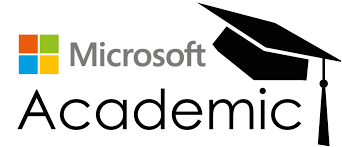STUDENTS' CONCEPTIONS, TROUBLESOME KNOWLEDGE, AND THRESHOLD CONCEPT OF CATALYST EFFECT ON REACTION RATE
Abstract
Student conceptions provide valuable information for understanding learning difficulties and provide insight into how they can be addressed appropriately. Analyzing students' conceptions can also provide insight into what concepts are troublesome or serve as concepts affecting learning. Using the Interview About Event-Mental Model Diagnostic Test (TDM-IAE), twenty-one high school and university students' conceptions, troublesome knowledge, and threshold concepts for understanding the effect of catalyst to reaction rate were identified. Students mostly held partial mental models or mental models with misconceptions in which three concepts were considered troublesome and threshold concepts for understanding the effect of catalyst on reaction rate.
Keywords
Full Text:
PDFReferences
Berg, A., Orraryd, D., Pettersson, A.J., & Hultén, M. (2019). Representational Challenges in Animated Chemistry: Self-Generated Animations as a Mean to Encourage Students’ Reflections on Sub-Micro Processes in Laboratory Exercises. Chemistry Education Research and Practice, 20(4), 710–737. https://doi.org/10.1039/C8RP00288F
Bongers, A., Beauvoir, B., Streja, N., Northoff, G., & Flynn, A. B. (2020). Building mental models of a reaction mechanism: the influence of static and animated representations, prior knowledge, and spatial ability. Chemistry Education Research and Practice, 21, 496-512. https://doi.org/10.1039/C9RP00198K
Brady, J.E., Jepersen, N.D., & Hyslop, A. (2012). Chemistry the Molecular Nature of Matter. John Wiley & Sons, Inc.
Çalik, M., Kolomuç, A. & Karagölge, Z. (2010). The Effect of Conceptual Change Pedagogy on Students’ Conceptions of Rate of Reaction. Journal of Science Education and Technology, 19, 422–433. https://doi.org/10.1007/s10956-010-9208-9
Cakmakci, G., Leach, J., & Donnelly, J. (2006). Students’ Ideas about Reaction Rate and its Relationship with Concentration or Pressure. International Journal of Science Education, 28(15), 1795–1815. https://doi.org/10.1080/095006906008234
Cakmakci, G. (2010). Identifying Alternative Conceptions of Chemical Kinetics among Secondary School and Undergraduate Students in Turkey. Journal of Chemical Education, 87(4), 449–455. https://doi.org/10.1021/ed8001336
Cam, A., Topcu, M.S., & Sulun, Y. (2015). Preservice science teachers’ attitudes towards chemistry and misconceptions about chemical kinetics. Asia-Pacific Forum on Science Learning and Teaching, 16 (2), 1-16.
Ferreira J.E.V., & Lawrie, G.A. (2019). Profiling the combinations of multiple representations used in large-class teaching: pathways to inclusive practices. Chemistry Education Research and Practice, 20, 902-923. https://doi.org/10.1039/C9RP00001A
Hill, S. (2019). The Difference Between Troublesome Knowledge and Threshold Concepts. Studies in Higher Education, 45(3), 665–676. https://doi.org/10.1080/03075079.2019.1619679
Lamichhane, A. R., Maltese, V., & Reck, C. (2018). Undergraduate chemistry students’ misconceptions about reaction coordinate diagrams. Chemistry Education Research and Practice, 19, 834-845. https://doi.org/10.1039/C8RP00045J
Loertscher J, Green, D, Lewis, J.E, Lin, S, Minderhout, V. (2014). Identification of threshold concepts for biochemistry. CBE Life Sci Educ. 13(3), 516-28. https://doi.org/10.1187/cbe.14-04-0066.
Le Vent, S. (2003). Rate of Reaction and Rate Equations. Journal of Chemical Education, 80(1), 89. https://doi.org/10.1021/ed080p89
Meyer, J. H. F., & Land, R. (2003). Threshold concepts and troublesome knowledge: Linkages to ways of thinking and practising within the disciplines. In ISL10 Improving Student Learning: Theory and Practice Ten Years On (pp. 412-424). Oxford Brookes University.
Meyer, J. H. F., & Land, R. (2005). Threshold concepts and troublesome knowledge (2): Epistemological considerations and a conceptual framework for teaching and learning. Higher Education, 49(3), 373–388. https://doi.org/10.1007/s10734-004-6779-5
Park, E. J., & Light, G. (2008). Identifying Atomic Structure as a Threshold Concept: Student mental models and troublesomeness. International Journal of Science Education, 31(2), 233–258. https://doi.org/10.1080/0950069070167588
Perkins, D. (1999). The many faces of constructivism. Educational Leadership, 57(3), 6–11.
Talanquer, V. (2015). Threshold Concepts in Chemistry: The Critical Role of Implicit Schemas. Journal of Chemical Education, 92, 3–9. https://doi.org/10.1021/ed500679k
Taştan Kırık, Ö., & Boz, Y. (2012). Cooperative learning instruction for conceptual change in the concepts of chemical kinetics. Chemistry Education Research and Practice, 13(3), 221–236. https://doi.org/10.1039/C1RP90072B
Watts, F. M., Schmidt-McCormack, J. A., Wilhelm, C. A., Karlin, A., Sattar, A., Thompson, B. C., Gere, A.R., & Shultz, G. V. (2020). What students write about when students write about mechanisms: analysis of features present in students’ written descriptions of an organic reaction mechanism. Chemistry Education Research and Practice, 21, 1148-1172. https://doi.org/10.1039/c9rp00185a
Wiji, W., Widhiyanti, T., Delisma, D., & Mulyani, S. (2021). The Intertextuality Study of the Conception, Threshold Concept, and Troublesome Knowledge on Redox Reaction. Journal of Engineering Science and Technology, 16(2), 1356–1369.
Yalçınkaya, E., Taştan-Kırık, Ö., Boz, Y., & Yıldıran, D. (2012). Is case-based learning an effective teaching strategy to challenge students’ alternative conceptions regarding chemical kinetics? Research in Science & Technological Education, 30(2), 151–172. https://doi.org/10.1080/02635143.2012.698605
Yan, Y. K., & Subramaniam, R. (2018). Using a multi-tier diagnostic test to explore the nature of students’ alternative conceptions on reaction kinetics. Chemistry Education Research and Practice, 19(1), 213-226.
DOI: https://doi.org/10.18269/jpmipa.v27i1.49957
Refbacks
- There are currently no refbacks.
Copyright (c) 2022 Jurnal Pengajaran MIPA

This work is licensed under a Creative Commons Attribution-ShareAlike 4.0 International License.
JPMIPA http://ejournal.upi.edu/index.php/jpmipa/index is licensed under a Creative Commons Attribution-ShareAlike 4.0 International License
Jurnal Pengajaran Matematika dan Ilmu Pengetahuan Alam (JPMIPA) or Journal of Mathematics and Science Teaching
All rights reserverd. pISSN 1412-0917 eISSN 2443-3616
Copyright © Faculty of Mathematics and Science Education (FPMIPA) Universitas Pendidikan Indonesia (UPI)
183,222 View JPMIPA Stats









